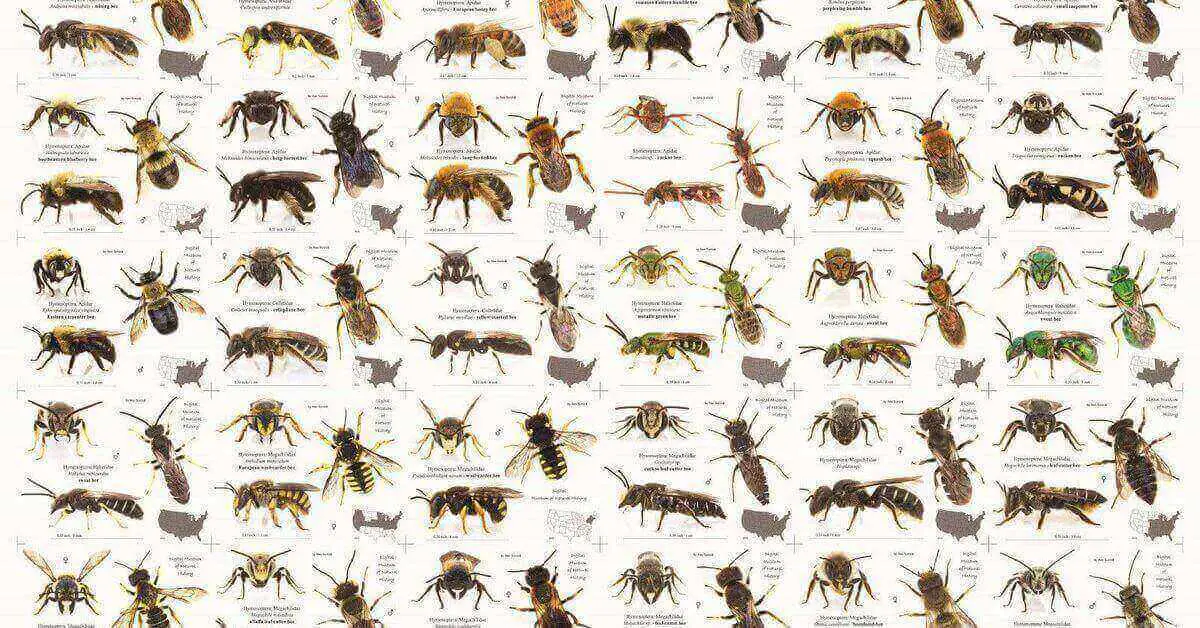Bees play a vital role in the ecosystem of Las Vegas, as they are important pollinators for many different types of plants and crops. However, certain types of bees can become a problem for residents and visitors in the city.
Types of Bees in Las vegas
Honey bee in Las Vegas
Honeybees are important pollinators in Las Vegas and play a crucial role in the local ecosystem. Beekeepers often keep them in the area for honey production and to aid in crop pollination. The desert climate in Las Vegas can be challenging for honey bees, as it can be very hot and dry. However, beekeepers in the area take special measures to keep their bees hydrated and cool during the summer months.
One interesting fact about honey bees in Las Vegas is that they can forage on a wide variety of plants, including those native to the desert, such as creosote and mesquite. This adaptability allows them to thrive in the unique environment of the area.
Africanized Honey Bee in Las Vegas
One type of bee prevalent in Las Vegas is the Africanized honey bee, also known as the “killer bee.” These bees are a hybrid of African and European honey bees, and they are known for their aggressive behavior and tendency to attack in larger numbers than other types of bees. They are also more likely to become agitated and defensive when their colony is disturbed, making them more dangerous to humans.

Africanized honey bees have a higher venom content than other bees, and their sting can cause severe allergic reactions in some people, potentially leading to anaphylaxis. They also tend to chase people for much longer distances than other bees, which can put people in danger. They also build colonies in walls, attics, and other structures, which can cause structural damage and lead to costly repairs.
Honey bee as a Pollinator
| 1 | Honey bees pollinate a large portion of the crops grown in Las Vegas, including fruits, vegetables, and nuts. |
| 2 | Pollination by honey bees increases the yield and quality of many crops, such as almonds, avocados, and blueberries. |
| 3 | Las Vegas honey bees travel up to 6 miles from their colony to collect nectar and pollen, pollinating many plants. |
| 4 | Honey bees visit many plants, including flowering trees, shrubs, and herbaceous plants. |
| 5 | In Las Vegas, honey bees are active during the spring and summer, when many plants bloom. |
| 6 | As urbanization increases in Las Vegas, honey bee face many challenges, such as habitat loss, pesticides, and disease. It’s important to support honey bee populations by providing them with suitable habitats, avoiding pesticides, and working with professional beekeepers. |
European honey Bee
Another type of bee found in Las Vegas is the European honey bee. These bees are not as aggressive as Africanized honey bees and are not considered dangerous to humans. However, they can still become a problem if they build a colony in a residential or commercial area, as they can cause damage to property and buildings.
Several wild bees can be found in Las Vegas, such as bumblebees and carpenter bees. These bees are not aggressive and are not considered dangerous to humans, but they can still become a problem if they build a colony in a residential or commercial area.
Related Articles:
- Bee Removal Services in Las Vegas: A comprehensive guide.
- How Many Beehives Per Acre. How much Honey per Hive?
- Difference in Bees vs Ants. Wasps and Hornets Lifecycle.
Bumble bees in LV
Las Vegas is home to various bumble bee species, including the common eastern bumble bee (Bombus impatiens) and the two-spotted bumble bee (Bombus bimaculatus). These bees are important pollinators for a wide range of plants and can often be seen flying from flower to flower in search of nectar. Bumble bees are also known for their distinctive buzz, which can be heard when flying close by. The western bumble bee (Bombus occidentalis) and the red-tailed bumble bee (Bombus lapidarius) also can be found in Las Vegas.

Bee Removal Service
Call For A Free Estimate! 702-291-9819
Local. Committed. Trusted.
Types of Wasps in Las Vegas
| Wasp Species | Description |
|---|---|
| Western Yellowjacket (Vespula pensylvanica) | Bright yellow and black striped wasps, commonly seen near food sources and garbage bins. They build nests in the ground or in cavities. |
| Paper Wasp (Polistes spp.) | Slender wasps with long bodies and long legs. They have reddish-brown to dark brown coloration and build open, umbrella-shaped nests under eaves or on branches. |
| Red Wasp (Polistes carolina) | Large wasps with reddish-brown coloration. They build papery nests in sheltered areas such as sheds, attics, or wall voids. |
| Great Golden Digger Wasp (Sphex ichneumoneus) | Large solitary wasps with metallic blue-black bodies and orange wings. They dig burrows in the ground and provision them with paralyzed insects for their offspring. |
| Tarantula Hawk (Pepsis spp.) | Large, solitary wasps with black bodies and bright orange wings. Females paralyze tarantulas and lay eggs on them as food for their larvae. They are known for their painful sting. |
| Cicada Killer Wasp (Sphecius speciosus) | Large wasps with yellow and black markings. Females hunt cicadas, paralyze them, and bury them as food for their young. They dig burrows in sandy soil. |
Conclusion
Bees are found in many countries in the world they are different in habits and behaviors. Like Africanized honey bee in Las Vegas are different from other bees. All other bees are lees aggerasive and stringy then Africanized bee. Bees in Las Vegas are vital for pollination.




